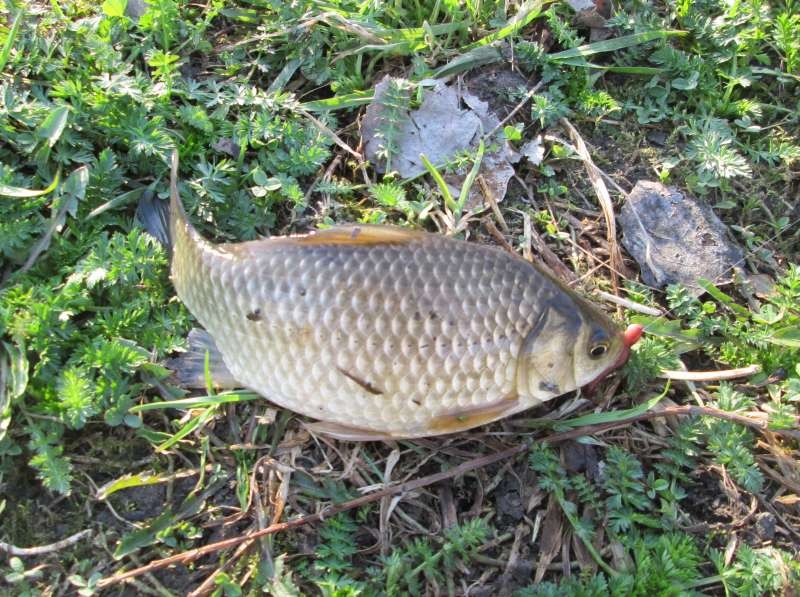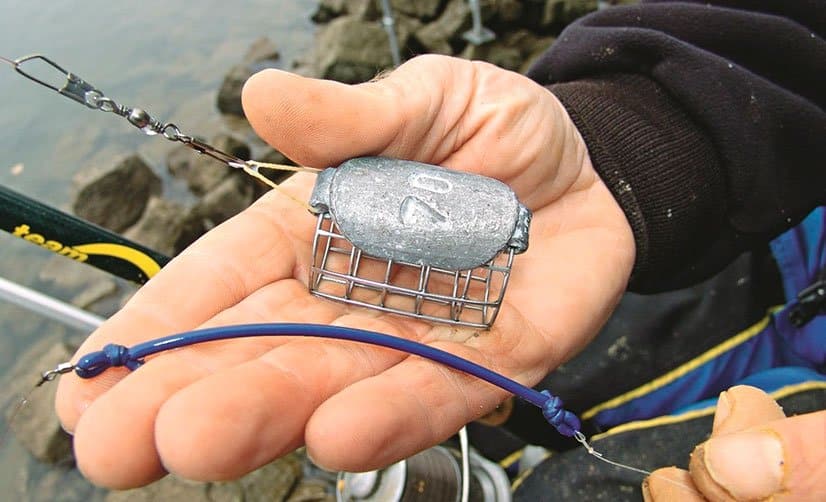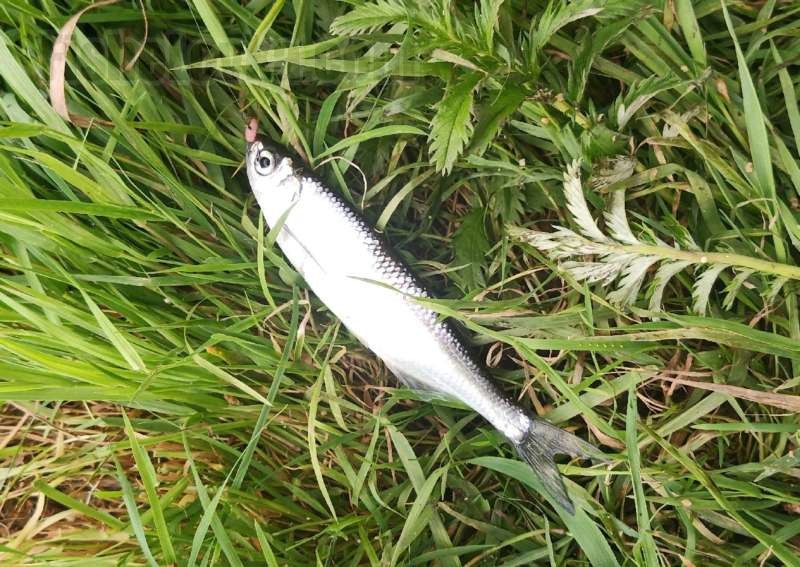Bottom tackle is a versatile tool for catching both peaceful and predatory fish. It is especially effective
in autumn , when large fish begin to actively feed and go to the depths.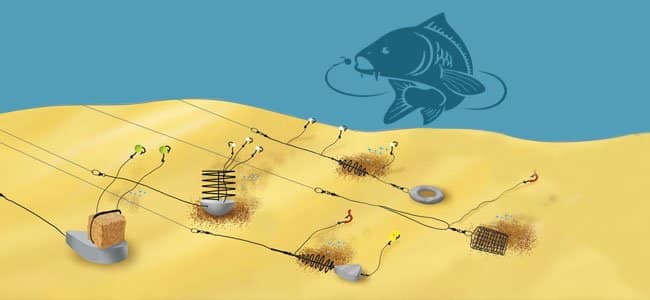
- Features of using donkey in the fall
- Types of bottom rigs with photos
- Donka fishing in autumn – bream fishing
- Fishing for crucian carp in the autumn
- Autumn roach on the donk
- Fishing for carp on a donk in September, October and November
- Fishing for autumn burbot with bottom tackle
- Autumn ide on the donk
- Fishing for a chub on a donk
- Bottom fishing tricks and secrets
- Поделиться ссылкой:
Features of using donkey in the fall
Bottom tackle is considered one of the most effective in the fall. It allows you to accurately deliver the bait to pits and other interesting places where fish go with a cold snap. In addition, the tackle can be equipped with a
feeder , which only increases the chances of catching – no need to try to hit the bait balls to the desired point, they will always be near the bait. Donka can be used not only from the shore, but also from a boat, and can also be used for fishing in shallow water, where fish live in the first half of autumn.
Types of bottom rigs with photos
There are a large number of bottom rigs, each of which can be successfully used in the fall:
- Zakidushka:
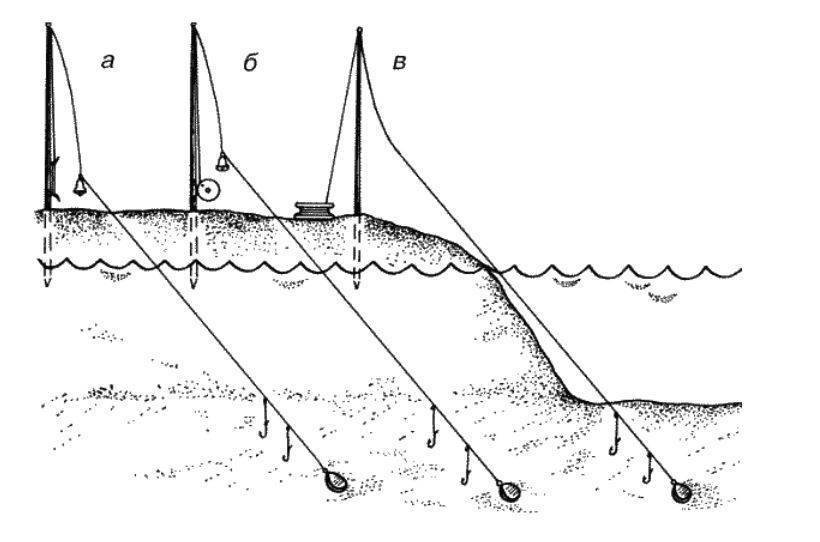 Standard cap [/ caption]
Standard cap [/ caption]
- Classic donk:
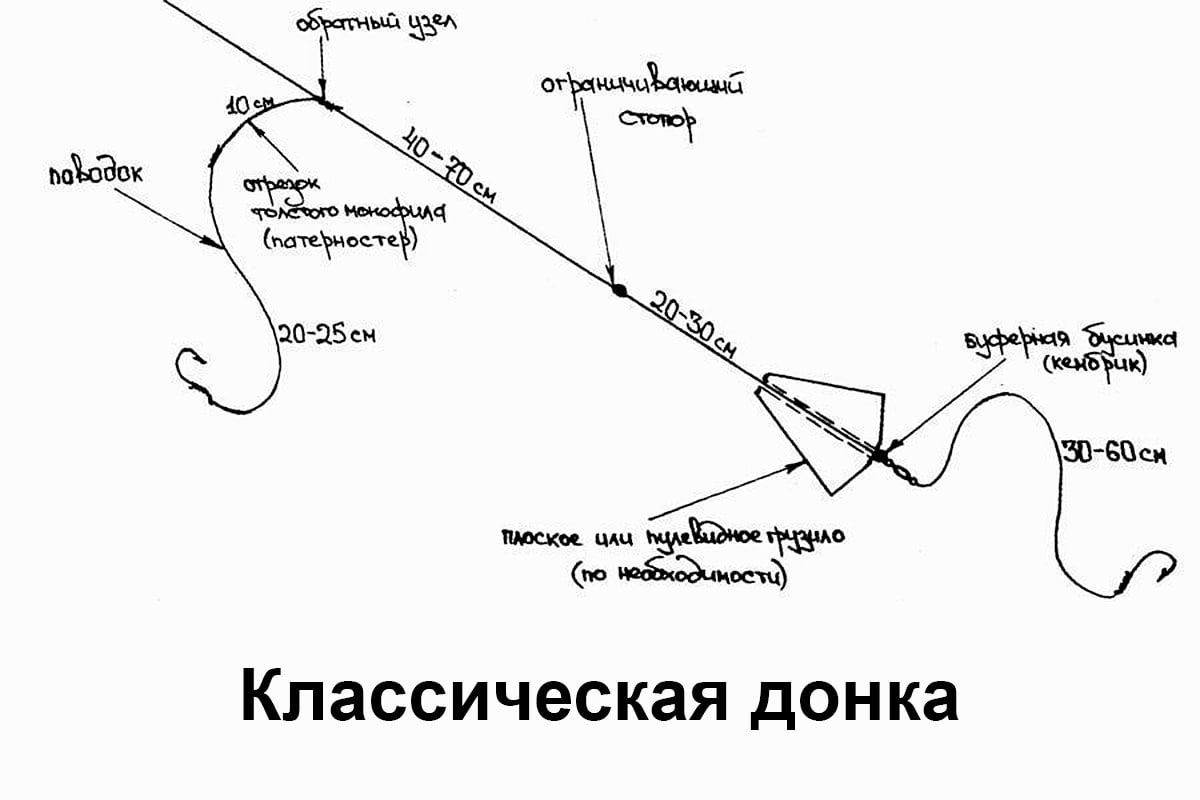
- Classic donk with a feeder:
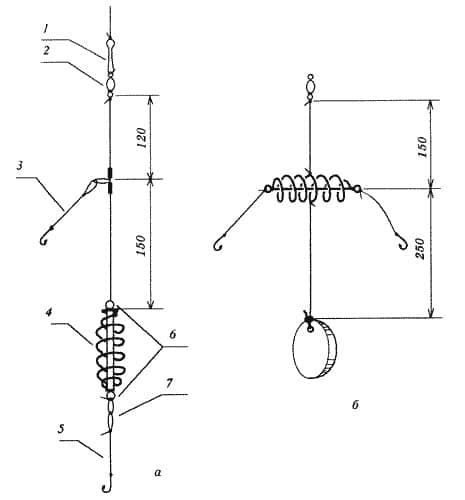
- Donka with elastic:
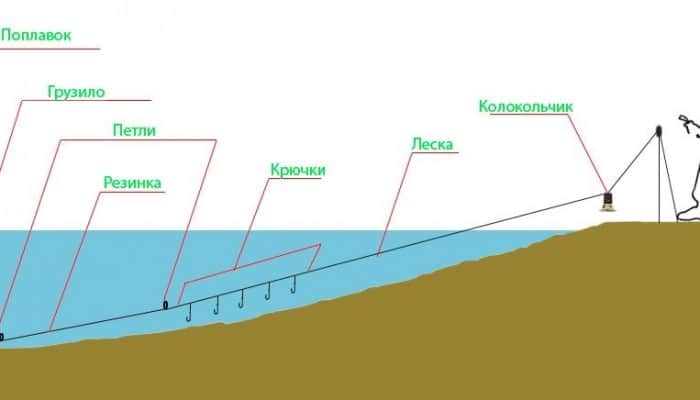
- “Crucian carp killer”:
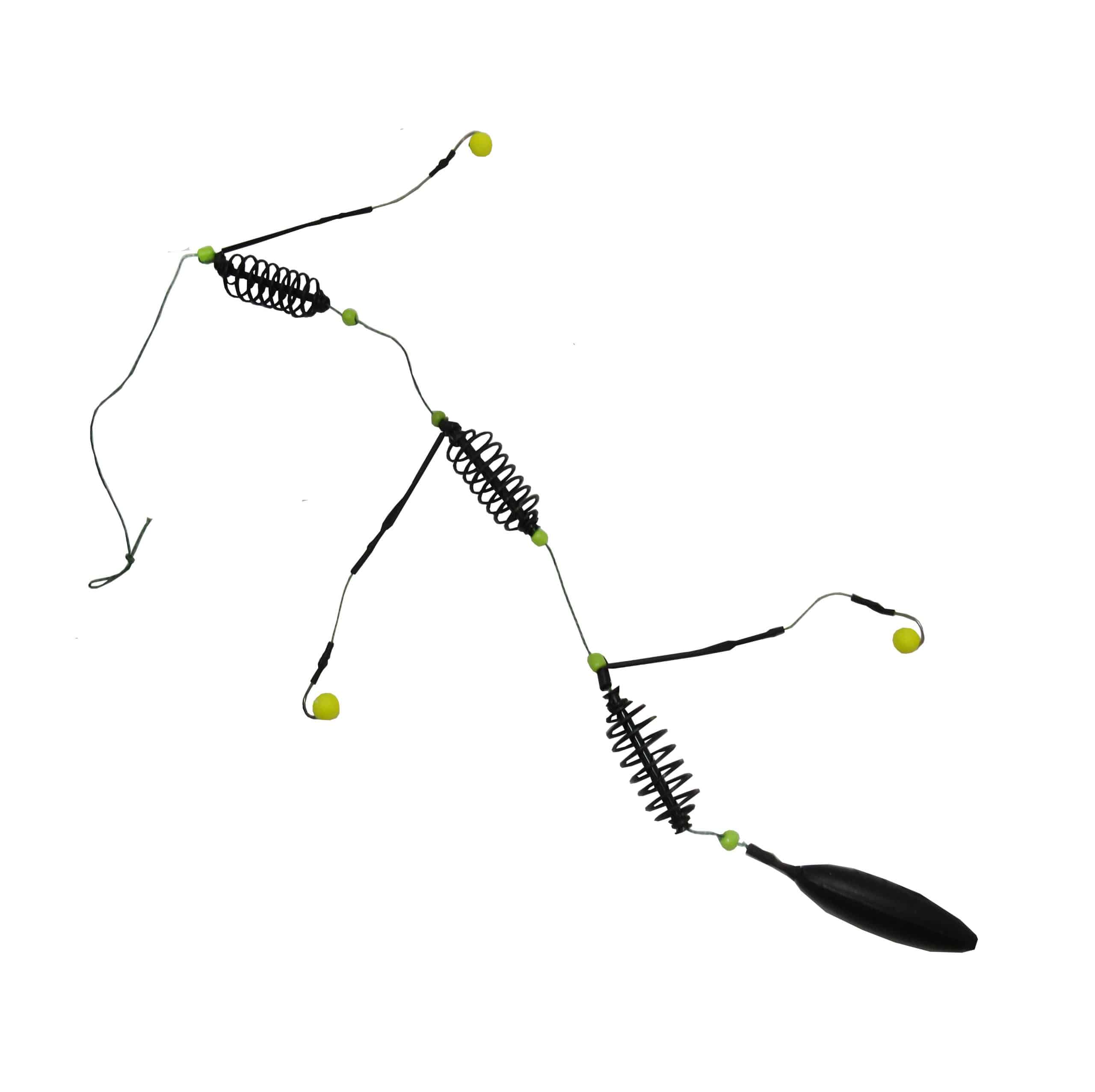
- For fishing on the current:
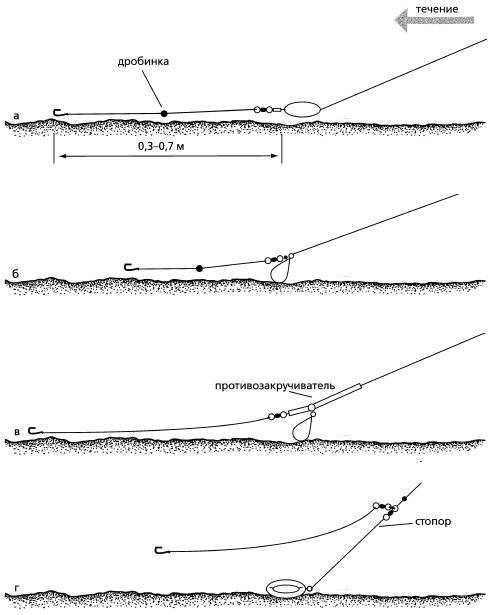 Bottom tackle for current fishing [/ caption]
Bottom tackle for current fishing [/ caption]
- “Satellite”:
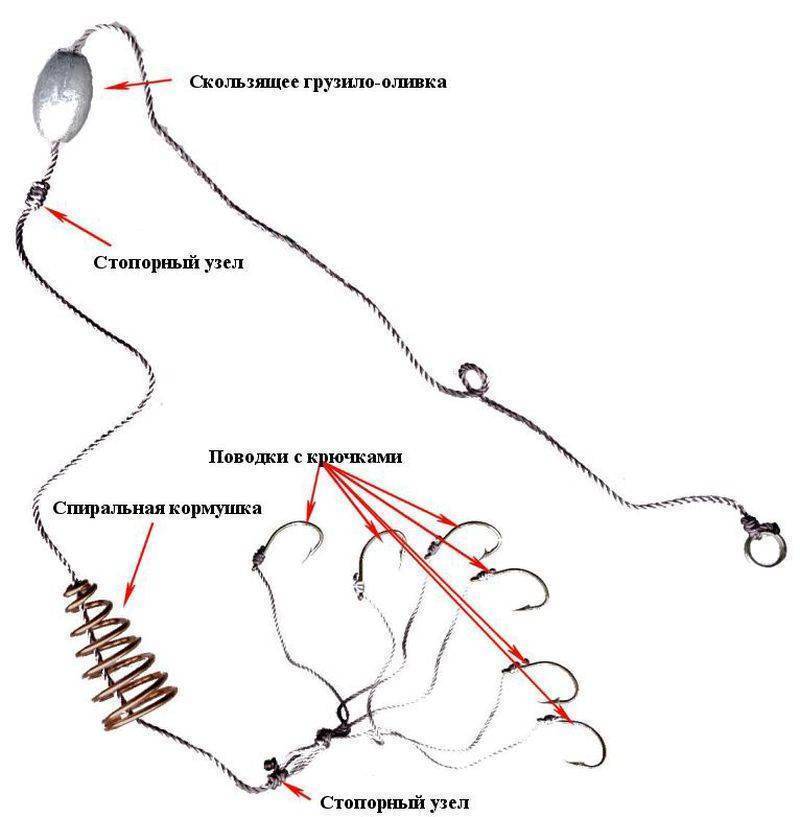 Satellite equipment [/ caption]
Satellite equipment [/ caption]
- “Carousel”:
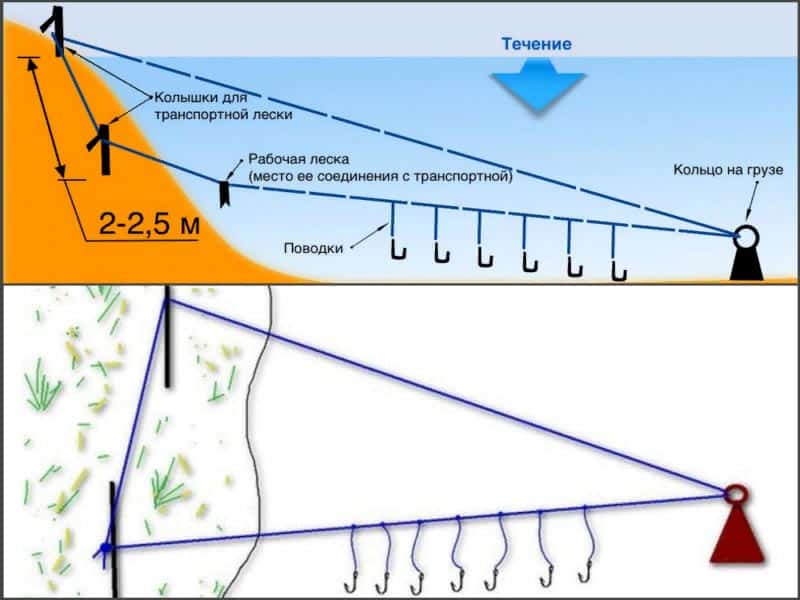
- Feeder equipment:
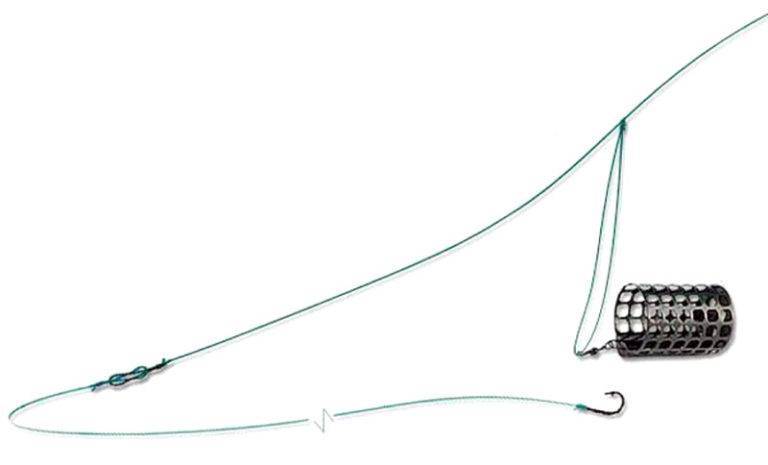
- “Helicopter”:
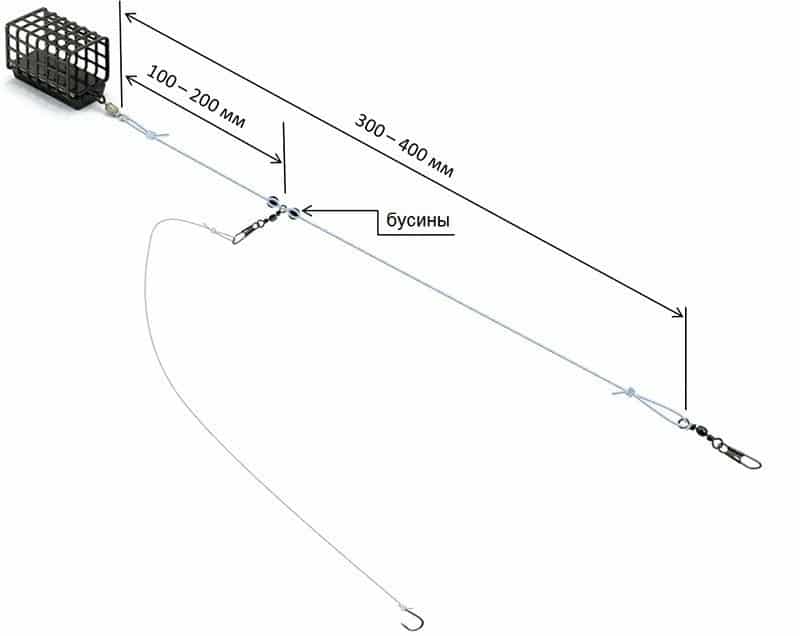
- “Watermelon”:
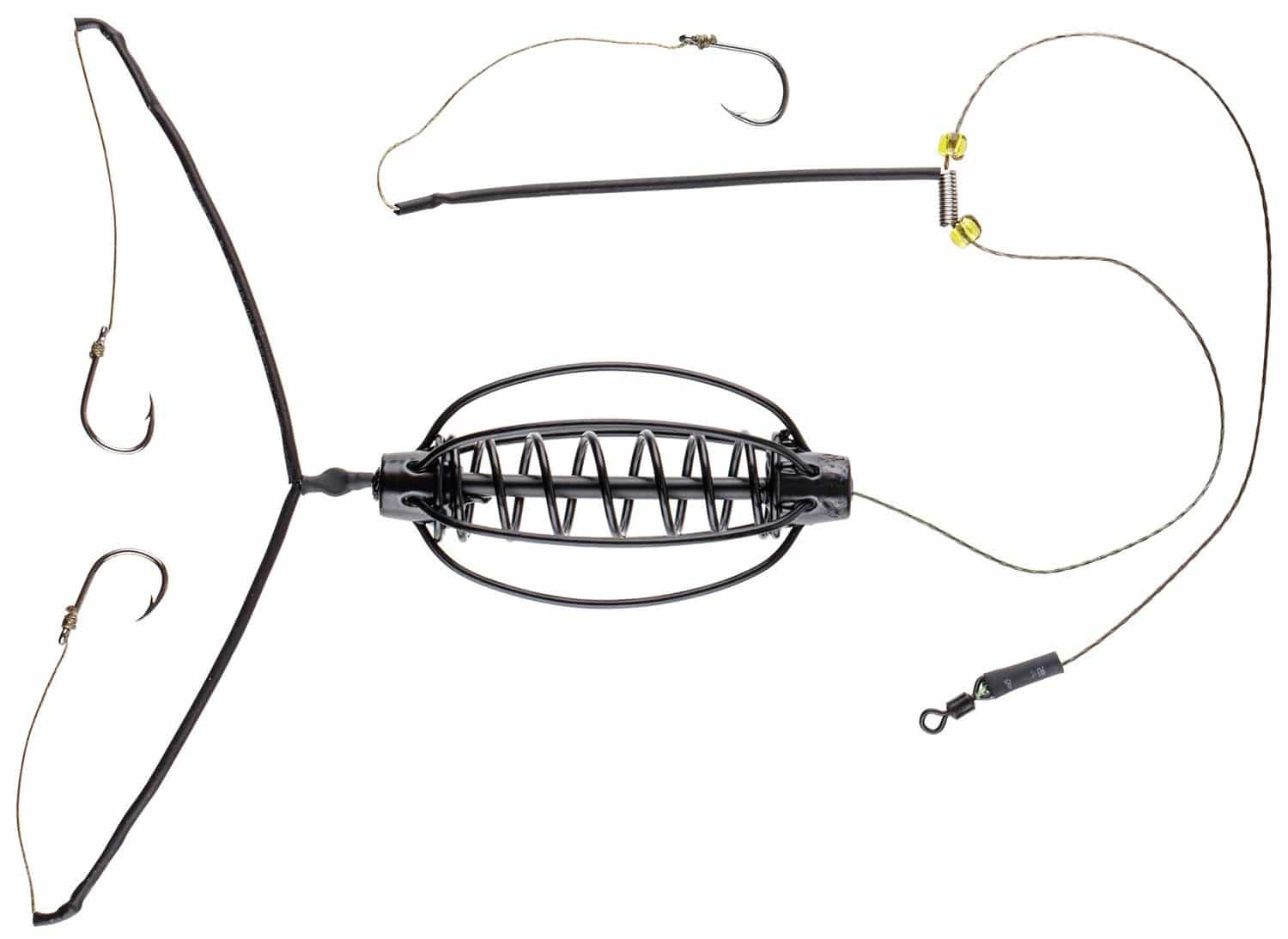
- “Bullet”:
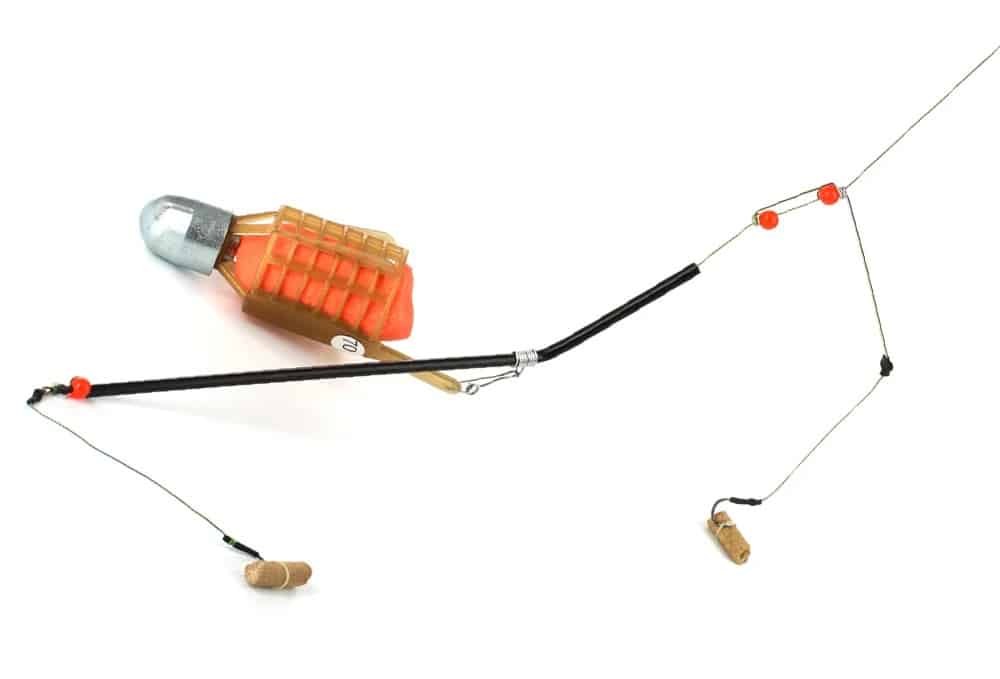
Donka fishing in autumn – bream fishing
The peak of bream activity falls on the first days of
September . The fish, sensing the approach of cold weather, tends to gain more fat. In the first half of the month, when the daytime air temperature is above 20 degrees, schools of bream move around the entire reservoir in search of food.
corn ,
peas ,
barley… Bream rarely lingers on hard soils, so you need to look for it in places with a muddy bottom. Especially if the relief there is uneven, with an average depth of 2-3 m.
In Octoberthe situation changes dramatically – with the onset of cold weather, bream go to the depths and no longer approach the shore. This month they practically do not move at all, so the main task is to find a place for the fish to stay. Although, if the weather is warm enough, bream can continue to feed. This month the weather plays an important role in fishing. Bream does not like a sharp drop in temperature, precipitation, wind. If the weather is sunny, you can find it in relatively shallow areas of the reservoir, where the water is somehow still warmed up by the sun. In other cases, you need to catch pits and edges in turn.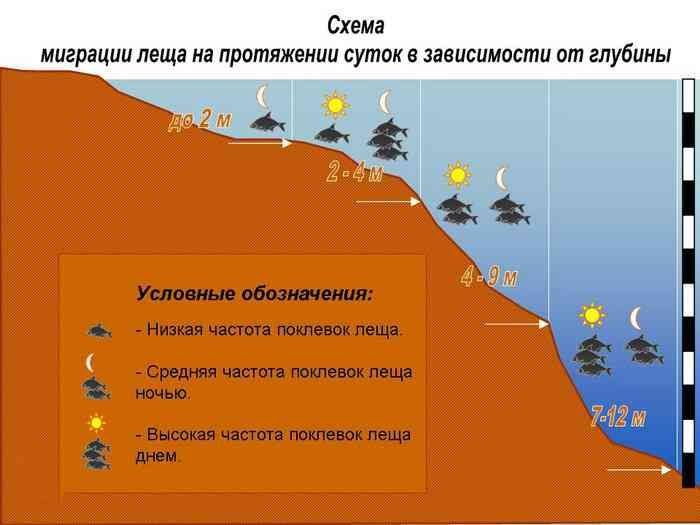
Novemberflocks of bream stand next to wintering pits and do not move. You should also look for it in deep parts of a reservoir with an uneven bottom. But now it is not enough to find a parking place, you still need to guess with the bait. In October and November, a bunch of worms or
bloodworms work best as bait
.
Attention! In November, fish activity is very changeable and does not begin until 10 am.
You can try to attract bream in the fall using the following
bait :
- 100 grams of bread crumbs;
- 100 grams of dry millet;
- 30 g of cake;
- 60 g bloodworm;
- 30 grams of oatmeal porridge.
The bait is mixed with water from the reservoir immediately before fishing.
A rod is chosen with a length of 3-4 meters with a fast action, so that careful bites of the bream are noticeable. For rivers with a weak current and lakes, a dough of 40-80 grams will be enough, for rivers with a fast current – up to 150 g. The coil is
inertialess with a capacious spool. When fishing from a boat, you can get by with compact reels, since long-distance casting is not required. Fishing line – 0.25 mm, leads – 0.2 mm in diameter and at least 50-60 cm long (it is important that careful bream does not feel resistance when biting).
Equipment : with an elastic band, a carousel, with a feeder, a feeder, a zakidushka.
Fishing for crucian carp in the autumn
In the first
days of September, crucian carp retains a summer lifestyle. At this time, he is a frequent visitor to shallow water. Crucians usually hide in thickets of aquatic vegetation, for example, among the leaves of water lilies that have not yet died off. It is often found near reeds, cattail. In September, crucian carp is active throughout the daylight hours and takes any offered bait. Very effective baits this month are: pearl barley, pea mastic, dough, maggot, worm, bloodworm. https://tytkleva.net/lovlya-mirnoj-ryby/nasadki-i-nazhivki/testo-dlya-rybalki.htm With a cold snap, the behavior of crucian carp changes dramatically. Since the
end of Septemberit goes deep and can appear in shallow water only on rare warm days. Now the bait of plant origin must be abandoned. You should look for crucian carp in pits, ditches, eyebrows. Areas of the reservoir are considered very interesting, where there is a sharp drop to a depth on the border of coastal vegetation. The time of fish activity is also shifting: now the crucian carp is most active for several hours after sunrise and before sunset.
Attention!
In November, there is no clear time frame for the activity of crucian carp, fishing in this month is very changeable.
Often, the bottom tackle for catching crucian carp in the fall is assembled on the basis of small telescopic spinning rods. Usually the length of 2.4-2.7 meters is sufficient for fishing both from the shore and from a boat. For long casts, a spinning reel is required, and for fishing from a boat or in holes near the shore, the reel can not be used at all – a reel with a line attached to the rod is enough. The weight of the sinker when fishing in a weak current should not exceed 20 grams, during the current 30-40 grams will be enough. Fishing line – 0.2-0.25 mm.
Equipment : crucian carp killer, feeder, with a feeder, carousel, helicopter.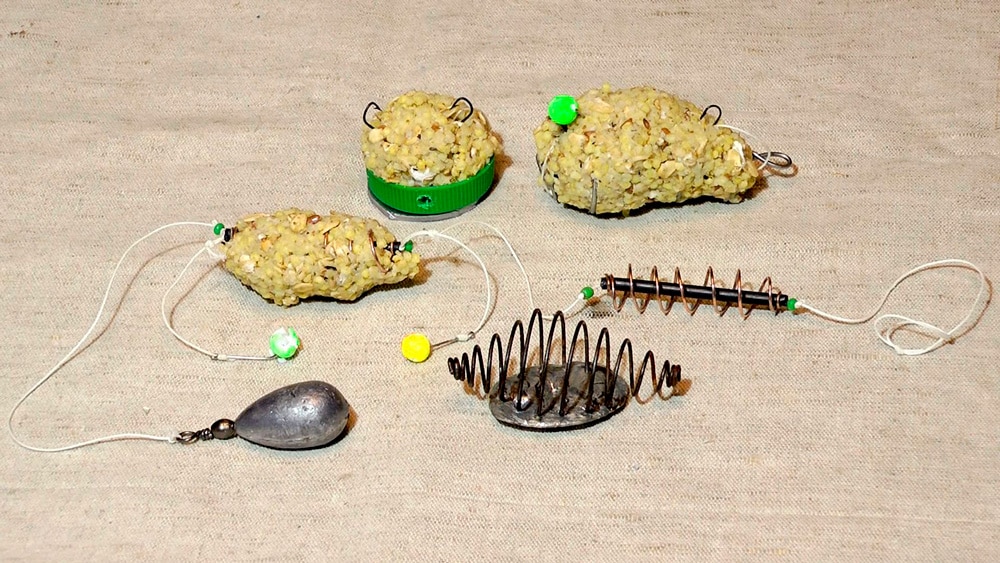
Attention! For long casts (from 30 meters), it is preferable to use a braid.
Fishing tactics are simple: a promising point is determined where the crucian carp are, then an accurate casting of the bait is performed there. You can’t do without bait in the fall, the most popular mixture: ground cake, mixed with millet porridge in a 1: 1 ratio. At the end of autumn, it is recommended to add some animal baits to the groundbait.
Autumn roach on the donk
In
September, the roach, like other fish, does not change its summer habits. She begins to feed heavily and is often in shallow water. This month, you should look for it in the thickets of coastal vegetation, in snags. The places where streams flow into a reservoir are considered to be very catchy – the water carries larvae, worms and other food that attracts fish. In September, almost all baits are in use.
Octoberthe food supply of the roach goes to the depth, and the fish follows it. Now the roach gather in flocks, so you can count on a good catch. The time of roach activity changes in October. If in September she was active throughout the day, now she is more active at night. The most promising places for fishing in any body of water are snags, fallen trees and any other shelter. Often, roach in October stands immediately behind the rifts, as well as in the places where rivers flow into the reservoir. Now you should forget about vegetable baits, you can seduce roach with the help of a worm, bloodworm, maggot. https://tytkleva.net/lovlya-mirnoj-ryby/opisanie-i-povadki/plotva-osennyaya.htm
November– an unfavorable month for fishing roach. The fish stands motionless and it is very difficult to stir it up. Rare bursts of activity occur in the morning and evening and last no more than an hour. In good weather, roach can sometimes bite during the day. You should look for roach in bays and creeks (provided there is sufficient depth), in pits near steep banks, at the edge of reeds. If there is a hole in the reservoir, above which a tree rises from the shore, we can say with a 100% guarantee that there will be roach there. The baits are October, but you can diversify them with
caddis flies , shrimps, shells. The only tackle requirement is sensitivity. When fishing from the shore – a rod up to 7 meters, from a boat – no more than 4 meters. Fishing line – from 0.12 to 0.14 mm, hook – No. 16-20.
Rigging: with feeder, feeder, classic, watermelon.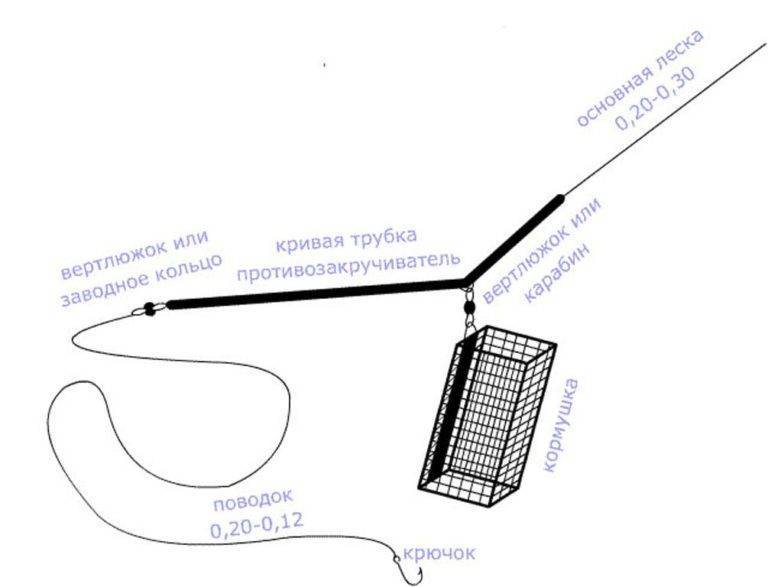 Feeder equipment [/ caption]
Feeder equipment [/ caption]
Fishing for carp on a donk in September, October and November
Carp is a desirable prey for any fisherman. This fish resists very briskly, therefore it gives extraordinary sensations when playing. Carp try to gain more fat in the fall and
September is considered the best month for catching this fish. In September, carp often visit the shoals, especially in the morning or evening. Priority fishing spots this month are areas of the reservoir with little or no current. Carp is often found in creeks covered with aquatic vegetation with a depth of 1 m to 1.5 m. [Caption id = “attachment_5237” align = “aligncenter” width = “800”]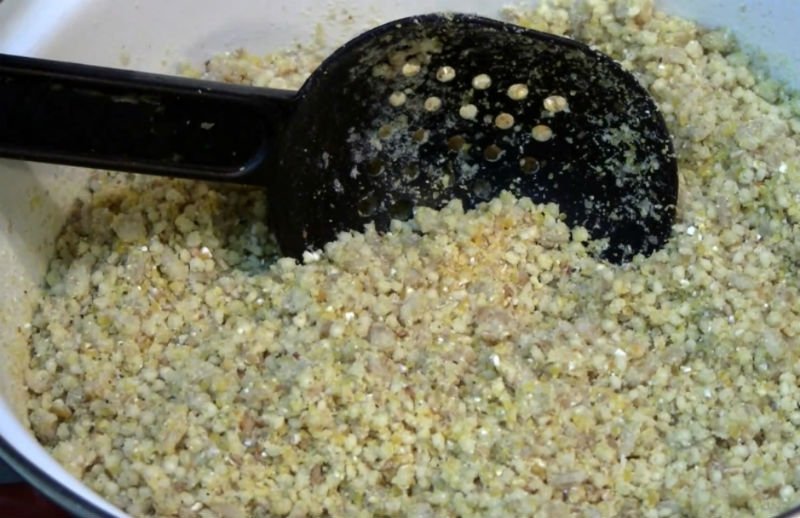
Also, large carp loves areas of the reservoir with sharp elevation changes. VOctober weather conditions worsen, which negatively affects carp biting. The fish has already managed to stock up on fat and no longer reacts so actively to baits. Usually in October, the first frosts occur, due to which the carp goes to a great depth. On rare fine days, carp can appear on the shallows, but it is better to focus on fishing in channels and bays with a depth of 3 m or more. https://tytkleva.net/lovlya-mirnoj-ryby/karpovaya-rybalka/lovlya-karpa-osenyu.htm In
November , the conditions for carp fishing are not very favorable. It is now more efficient to catch it from the boat. The fish practically ceases to eat and takes up its wintering pits. You can try to attract it with the help of bait: boiled pearl barley, to which vegetable oil, bloodworms and seeds are added.
Interesting to know! Since November, carp can be caught in areas of rivers with strong currents.
Even the most primitive zakidushka donka can be used for carp fishing, but more serious options should be preferred.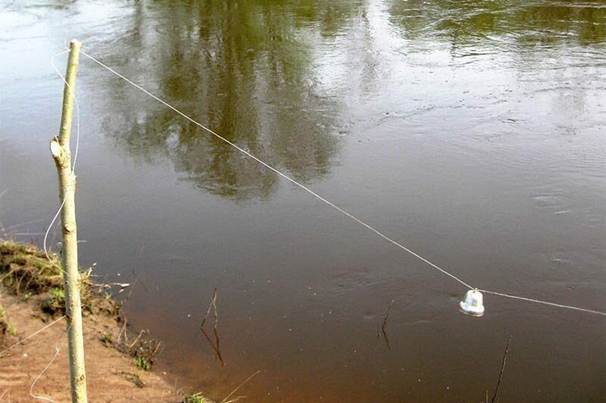
Attention! When fishing for carp, it is especially important to monitor the sharpness of the hooks.
Equipment : crucian carp killer, helicopter, bullet, zakidushka, feeder. Fishing on the donkeys in the fall, choosing a place, baits, fishing technique – video of 2021: https://youtu.be/ChQNkUOtTZU
Fishing for autumn burbot with bottom tackle
Lowering the temperature has a beneficial effect on the activity of the burbot. Since
September, fishermen have been hunting for this fish, although this month cannot be called particularly catchy. Short-term bursts of activity occur with a sharp deterioration in the weather, when it rains, a strong wind rises. In September, there are no specific places for catching burbot – it moves randomly throughout the reservoir. Today he stands in pits at a depth, and tomorrow he will walk along the coastline. The burbot moves after its prey – a small fish, therefore, you need to throw the bait where the fry is.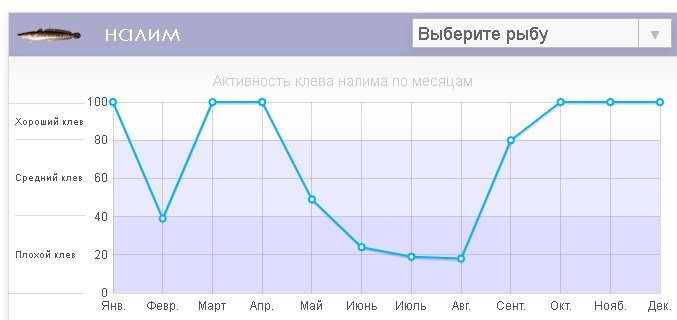
Octoberwhen the weather is stable and bad, burbot is especially active. It stands at a depth and, as in the case of September, bites more often in rainy weather. Successful burbot fishing continues in
November . He goes into the pits after his food base, therefore, having found one fish, it is worth continuing to fish the site – his relatives will stand nearby. In addition to pits, you can find burbot in November on the edges, dumps, where rivers or streams flow into a body of water.
It is difficult to catch burbot without bait. Best option: minced fish or meat, ground with worms or bloodworms.
Burbot is a rather powerful fish, so the tackle must be appropriate. For fishing from a boat or on small rivers, a rod up to 3 m is enough, on large bodies of water, preference should be given to strong “sticks” up to 5 m long. Reels with a spool size of 2000-2500 Shimano will be enough. In addition to strength, there is another requirement: the line should be wound and unwound easily under load. It makes no sense to use too thick fishing line – really large burbots are not so common, and braids with a diameter of 0.14 mm will be enough. There can be any rig, but it is important to consider that the burbot always feeds from the bottom, so the leashes should be short. The best bait is a regular worm. They are strung in bunches of 6-7 pieces. They also successfully catch burbot with live bait or dreisen.
Rigging: zakidushka, classic, with a feeder, satellite.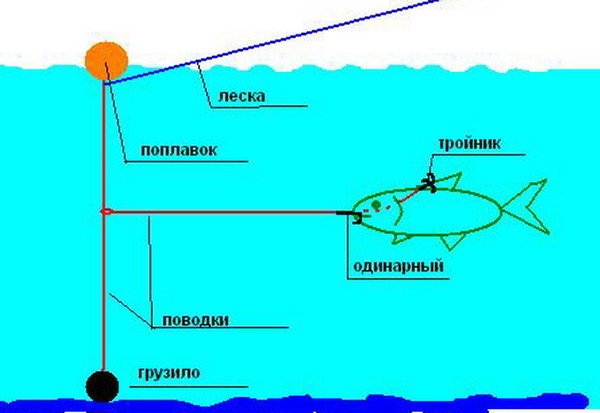
Autumn ide on the donk
Fishing ide in the fall on the donk is a dynamic and exciting activity. In September, while the weather is warm, the ide occupies parts of the reservoir with a calm current and tries to avoid rapids. A large ide is standing this month near pits and ridges bordering aquatic vegetation. Ide often occurs on rifts, stretches, and under steep banks. In the second half of the month, when the air temperature drops, the ide begins to move deeper, but in good weather it can appear in shallow water. https://tytkleva.net/lovlya-xishhnoj-ryby/opisanie-povadki/kak-lovit-yazya-osenyu.htm In
Octoberide activity is noticeably reduced, but this is a good chance to try to catch a trophy, since small fish are not very annoying with bites, as in September.
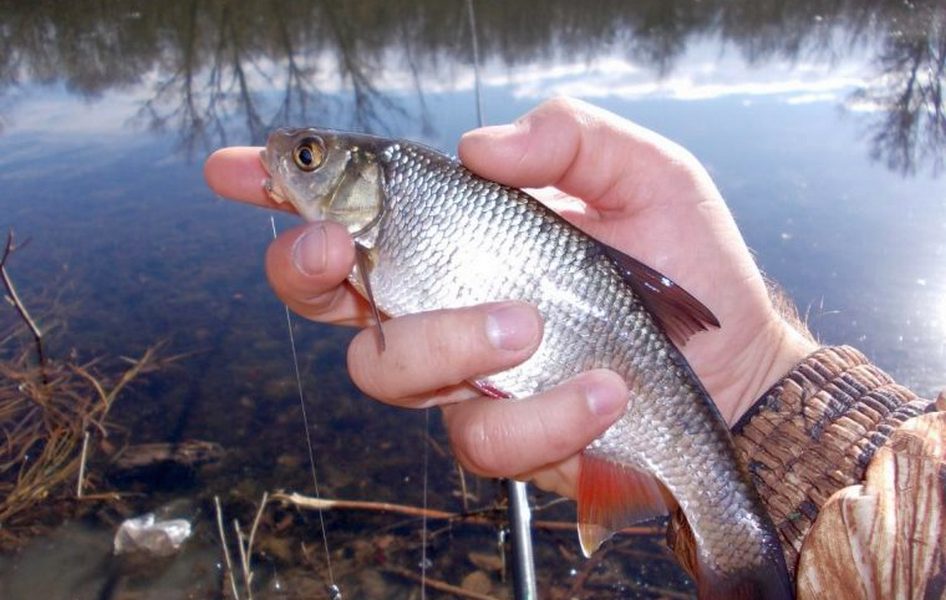
Attention! In the absence of precipitation, the water becomes very transparent, therefore, the tackle should be thinner than usual.
In
November, the ide hibernates and stands near the pits. When choosing places, preference should be given to areas of the reservoir with shelters, a muddy bottom and sufficient depth where the ide likes to stand. On the rivers, you can fish for rapids, although ide does not appear there often. Creeks with a decent depth are especially attractive, the surface of the water in which is covered with fallen leaves. Groundbait for ide fishing in the fall is required. The classic recipe involves the addition of boiled peas, wheat and corn. The ingredients are mixed in a 1: 1 ratio, then bloodworms or worms are added to the mixture on the pond. You can also add cake.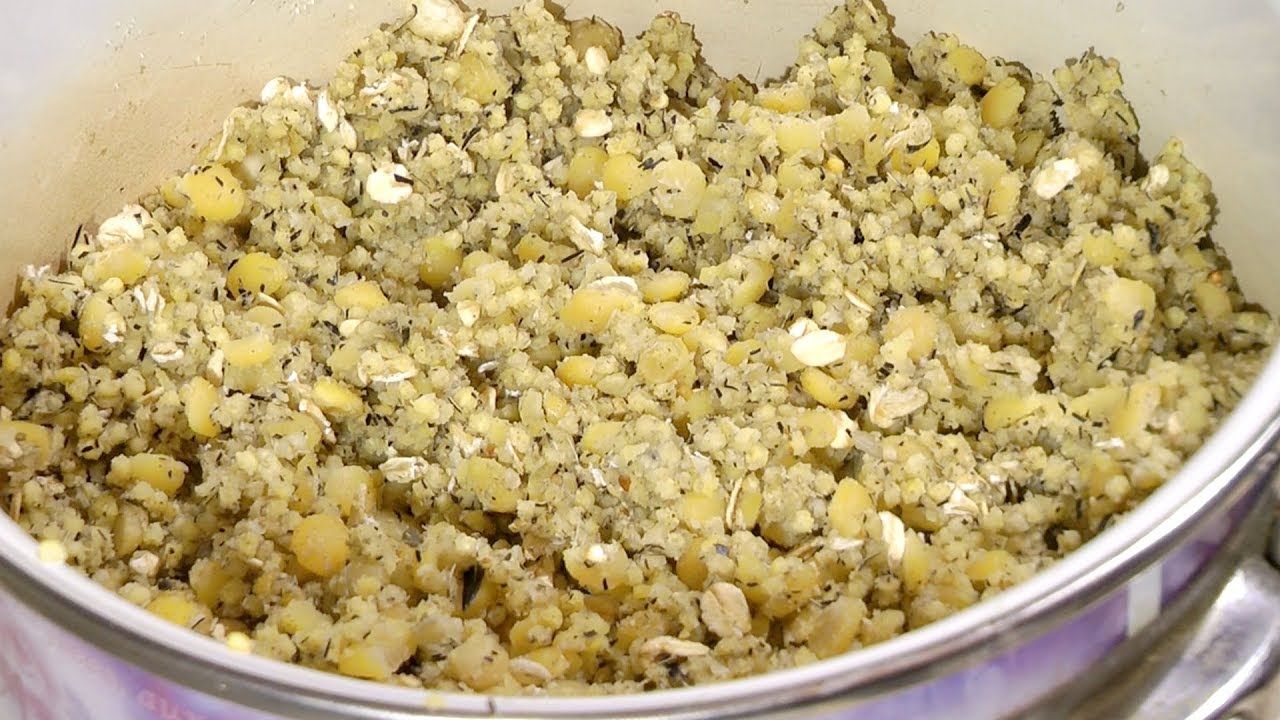
Equipment : classic, feeder, with a feeder, helicopter, watermelon, carousel.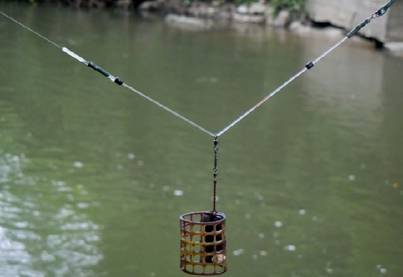
Fishing for a chub on a donk
Bottom tackle allows you to catch chub in the fall no less successfully than spinning. Chub loves medium to fast flowing waters, so lakes, ponds and reservoirs should be discarded right away. Fish there, of course, is found, but very rarely. In
September, the chub leads its usual way of life and begins to actively eat before the upcoming cold weather. This month he goes well for live bait, crawling, leech, dragonfly, grasshoppers, frogs, cheese, cheese dough.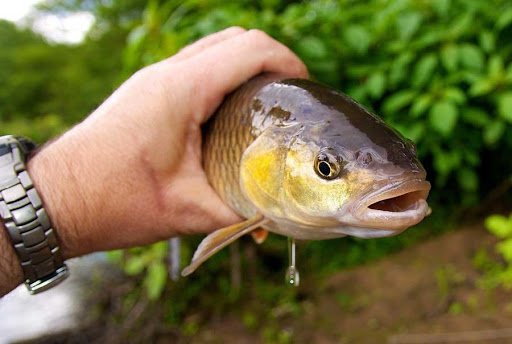
Octobermakes the chub more passive and makes him go deeper. Now it occupies the exits from the pits, the edge, the dumps under the steep banks, but in warm weather it often goes into shallow water. It is impossible to say in advance about the effective bait – the taste preferences of the chub can change several times a day. It often happens that in one place he bites on maggots, and if you move a few meters further – on caddis flies. September baits remain relevant, with the exception of cheese and dough. They can be varied with chicken liver, bear, shellfish and various beetles. In
November, catching a chub is a great success, but it is in this month that trophy specimens are taken more often. You should look for it in pits, whirlpools, as well as at the exit from them.
Attention! It is better to use bleak or gudgeon as live bait.
The bottom tackle is completed with a strong rod, 3-4 m long, in the case of fishing from a boat – 2-3 m. The reel is inertialess, with a powerful friction. The spool must hold at least 100m of regular line, 0.3mm thick. Since fishing is carried out on rivers with the current, the lead is selected appropriately. Hooks – # 8-12. Leashes are made of fishing line, 0.18-0.2 mm thick. You can successfully catch a chub with an ordinary donkey-zakidushka, which consists of a strong stick and fishing line 20-30 m long and 0.5 mm thick. Such tackle is often used for fishing with live bait. It is thrown in the evening and checked only in the morning.
Equipment : classic, feeder, for fishing on the current, carousel, with a feeder, zakidushka. https://tytkleva.net/lovlya-xishhnoj-ryby/spinning/strategiya-i-taktika/lovlya-golavlya-osenyui.htm
Bottom fishing tricks and secrets
- When fishing with several rods, it makes sense to put bite alarms with different sounds on each of them in order to determine for sure where the bite occurred.
- The most effective bottom rod rig is the feeder. The feeder is always close to the bait and attracts fish to the desired point.
- It is advisable to make casts at the same point where the bait was thrown. In order not to lose this place after pulling the rig out of the water, you can make landmarks from sticks on the shore.
The use of bottom tackle in the fall significantly increases the chances of catching a trophy. The tackle itself cannot be called difficult, so even a beginner can handle it. A wide variety of rigs will allow you to adapt to almost any fishing conditions.
